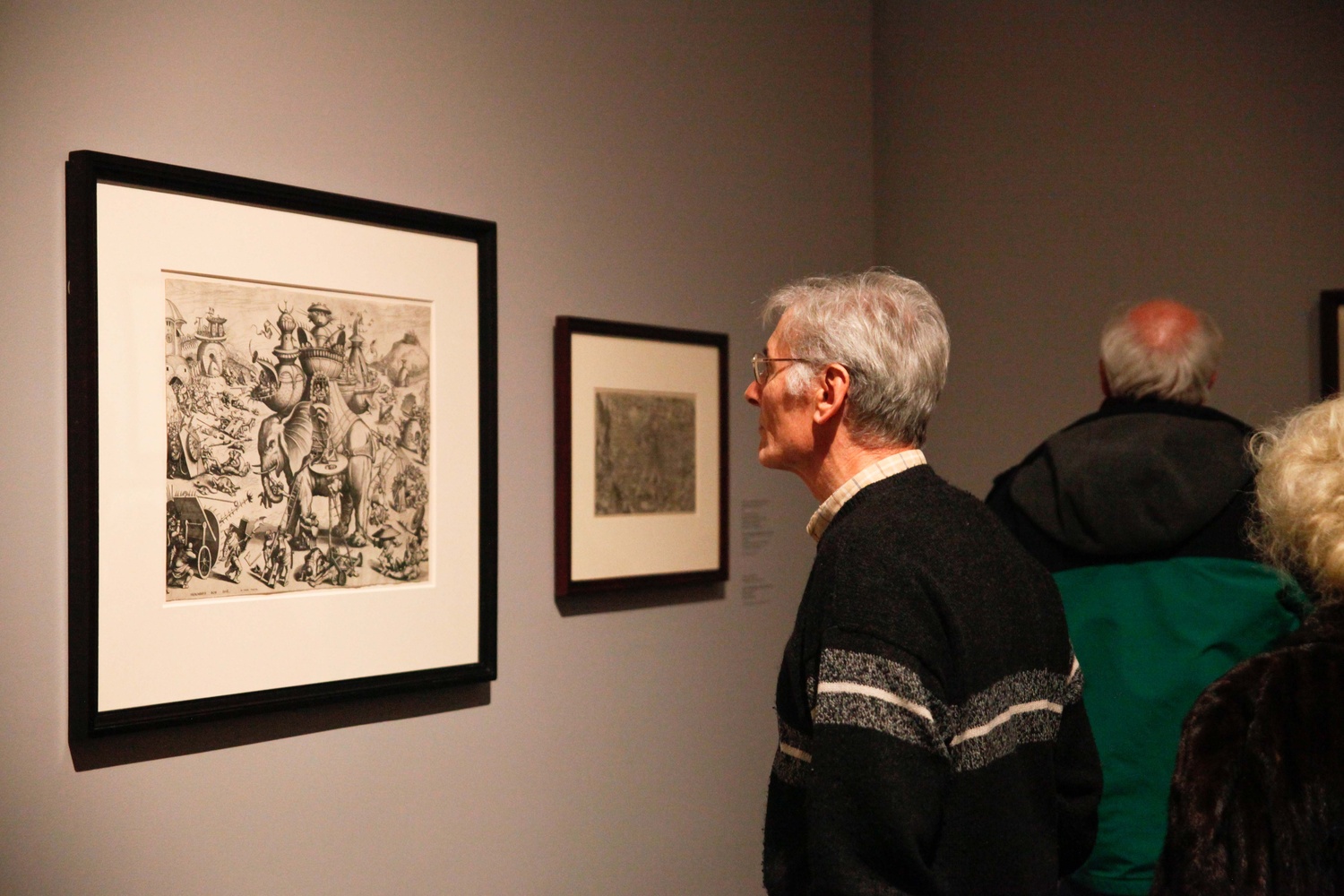
News
Cambridge Residents Slam Council Proposal to Delay Bike Lane Construction

News
‘Gender-Affirming Slay Fest’: Harvard College QSA Hosts Annual Queer Prom

News
‘Not Being Nerds’: Harvard Students Dance to Tinashe at Yardfest

News
Wrongful Death Trial Against CAMHS Employee Over 2015 Student Suicide To Begin Tuesday

News
Cornel West, Harvard Affiliates Call for University to Divest from ‘Israeli Apartheid’ at Rally
Koerner Ventures Beyond Bosch at Harvard Art Museums

Harvard art historian Joseph Leo Koerner explored the art of the early Netherlandish painter Hieronymus Bosch and its reception in his lecture “Beyond Bosch?” delivered before a nearly full Menschel Hall in the Harvard Art Museums on Thursday. The museums hosted the discussion in conjunction with their new exhibition, “Beyond Bosch: The Afterlife of a Renaissance Master in Print” which features a selection of prints from the sixteenth century to the present, made after Bosch and drawing on his style or his subject matter.
Bosch’s enigmatic, eccentric images—a tree-man with boats for feet or a party of merrymakers floating on the sea in a mussel shell—continued to fascinate viewers even after his death in 1516, and artists working in the cheap, widely disseminated print medium recontextualized and reinterpreted Bosch’s art for an eager audience. “We know a lot about [Bosch], but we also know very little about him,” Koerner said. “So what we have in the exhibition is something very precious. Namely, we learn from the exhibition, through seeing what people thought about Bosch, something about what that mysterious figure wanted to do.”
During his talk, Koerner discussed the many artists who imitated Bosch, noting both aspects of the painter’s art that later printmakers maintained and the facets that they changed. Referring to his choice to put a question mark at the end of his lecture’s title, Koerner touched on the question that these artists raise for him: Have we gone beyond Bosch? “That’s the question which I can’t answer,” he said. “Everybody can go into the exhibition with that question in mind—not only what is beyond Bosch, but did they go beyond Bosch? Did they make some step—artistic, moral, ethical, political? Is there a movement from the one to the other?”
According to Danielle Carrabino, the exhibition’s curator at the Harvard Art Museums, Koerner’s lecture was an excellent introduction to the selection of prints on view. “I thought it was remarkable how he can take an artist like Bosch, who’s so complex and about whom he knows so much, and condense it into a lecture that was both accessible to a general public and yet still held for a specialist,” Carrabino says. Because the exhibition operates on the premise that the viewer already knows who Bosch is, Carrabino says she was particularly appreciative of the information that Koerner covered. “I couldn’t have asked for a better introduction for people coming to visit the exhibition, to have that kind of background,” she says.
This exhibition, which was conceptualized and originally presented by the Saint Louis Art Museum, is part of an international commemoration of the 500th anniversary of Bosch’s death. Being a part of this worldwide memorialization is one of the aspects of the exhibition that Carrabino says is most exciting to her. Also of interest to Carrabino is the source of much of the material, as only seven of the pieces are from the Harvard Art Museums’ own holdings. “The majority of the works on display are from a private collection,” she says. “So this is an opportunity, really a unique opportunity, for people to see things that normally wouldn’t be available to the public.”
Carrabino hopes that the exhibition, located in the museums’ University Research Gallery, will draw visitors who will not only enjoy the pieces of work but also learn from them. Already, she says, several professors have expressed interest in working the prints into their curriculum for the semester.
Koerner emphasized the appeal of Boschian prints to a wide variety of viewers from the scholarly to the simply curious. In an interview following the lecture, he discussed the enduring fascination of the works on exhibition. “If you give these works just a minute of your time, they’ll draw you into them and they won’t let you loose,” he says.
The show, which opened Jan. 23, will be on view through May 8.
—Staff writer Abby L. Noyes can be reached at abbigaile.noyes@thecrimson.com.
Want to keep up with breaking news? Subscribe to our email newsletter.
